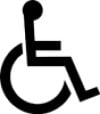thanks for the clarifications Narue.
I note you have put
using namespace std;
I noticed you guys on this forum don't use
using namespace std;but I thought it was more a matter of style other than anything else, what do you mean exactly by
will have their namespace polluted with no warning whatsoever
? what type of warnings? I always thought that it was some kind of shorthand, allowing us to get the rid of the
std::anytime we want to use cout, cin, endl, therefore I believe I use, maybe partially I am not sure, what's in the std namespace any time I cout something, isn't it the case?

